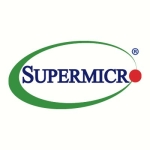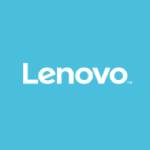What is most valuable?
It's reliability. We're using VMware as the backbone on it. We have High Availability so if something happens to one it switches over to everything else. We've had it for about six or seven years with no problems. To me, that's the central core of our business, that we have that connected up to StoreVirtual SANs, but we also have it connected to other SANs, and everything works seamlessly. In fact we've got the C7000 and two C3000's running with two blades. So that gives us flexibility for each of our security zones.
How has it helped my organization?
For us, it's the flexibility. We have to look at every nickel, and what we've found is that with the virtualization, we can get a more bang for the buck. We're using everything to it's full potential, and for a number of years we had ProLiant DL380s in the racks and they might be using one application on it. If we can take that and move it into the BladeSystem, then we can run six, seven, or eight servers off of the BladeSystem, and then everything is a lot easier to manage. We've got blades in there and we've never had any issues with equipment. We like the flexibility of being able to make a change without having to go and buy an extra drive. The whole virtual infrastructure is wonderful.
What needs improvement?
There's some little nitty-picky things and we're still trying to figure out a couple of things in the background. For functionality and everything, it runs well.
What do I think about the stability of the solution?
There haven't been a lot of changes, and we like that. There are newer blades, and they work seamlessly with the others. We don't need to have somebody watching it everyday and all the time. We've seem systems in the past where you've had to dedicate a resource to watching your BladeSystem, SANs, or anything else. I don't want to say "Set it and forget it." It pretty much runs, so, we've been very happy there.
Buyer's Guide
HPE BladeSystem
December 2025
Learn what your peers think about HPE BladeSystem. Get advice and tips from experienced pros sharing their opinions. Updated: December 2025.
879,371 professionals have used our research since 2012.
What do I think about the scalability of the solution?
We can change anytime. We can add a blade, or add RAM. In fact we did a process last summer where we went and doubled the RAM in each of the blades. That was the one limitation we had, we don't have to go "Okay, well I've got a few Megs here, I've got a few Gigs here, I can move things around." Making the workload larger, or smaller everything works very well. We're not big on hyperconvergence, but we love the ability to be able to add and subtract if we need to.
How are customer service and support?
We've contacted tech support on all three phases. I haven't always been impressed with getting some guy in India. I'm sure that's the biggest complaint everybody gets. They're very qualified guys there, but between trying to understand them is difficult. I did have an incident with my blade enclosure where some of it was telling me I had a critical error. I called over and the guy says, "Well, just receipt your onboard administrator." So I did, and it worked for five minutes, and they closed my ticket. But for the most part on other things, such as when a drive dies, we can call somebody and it's there.
We do have local guys that will come out and work on things if we need it, and we have taken advantage of that in the past. With any kind of technology, it's not going to be a hundred percent. But we've generally been very happy. We've got one guy in town that we kind of like a lot, except for when he screwed up one thing, but that's going to happen anyway. We've been happy with tech support.
Which solution did I use previously and why did I switch?
What we had was many, many DL380 Proliants. I had a couple of them configured as VM hosts, and then we decided that to scale building, convergence, and the flexibility of what a BladeSystem could do for you made a lot of sense. It wasn't like I said something such as "Hey, I just want to buy a BladeSystem." But our vendor kind of walked us through all the benefits, and we were very happy with how it came out, and that's where we're going. Now we can't imagine doing business without it. We went from about twenty-five servers up to over a hundred. That would not be possible if I had to put a DL380 for each application. So just having the ability to have sixty servers in a two-by-two space is outstanding. That's been one of the biggest reasons why we went with it.
How was the initial setup?
We have a vendor from here in Las Vegas who came up and helped put it together. I kind of watched over the shoulder and stayed out of the way, but that has been more or less my responsibility ever since. The setup was fairly easy. Ever since, any changes have been fairly easy to do.
Which other solutions did I evaluate?
We were moving from ProLiant, and we have a vendor who has a big HPE shop, and I think they sell more than anybody else in Nevada, and we've been very happy with them. They said, "Well, this is what you need." And we said, "Okay." The price was fair, and we thought, "Okay, we're going to do it." One of the troubles with our systems is we have to plan so far in advance on what we want to get that we kind of target something. We might look around a little bit right at the last minute, but in this case, the name HPE, the support we get from our people and HPE, and the price just made it that we had to go that way.
Disclosure: My company does not have a business relationship with this vendor other than being a customer.










